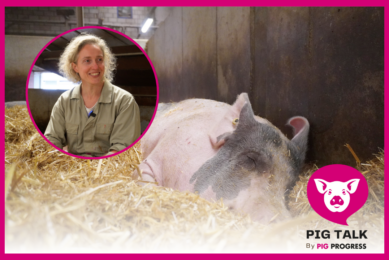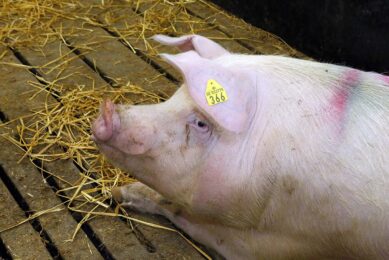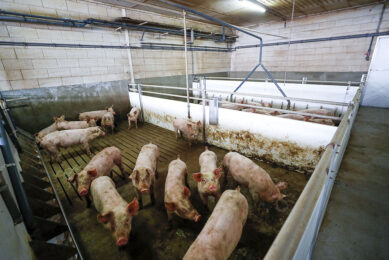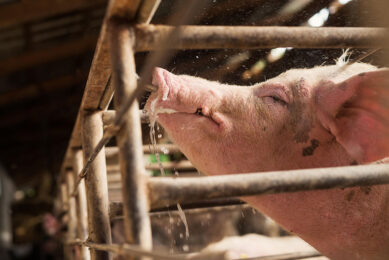What is the impact of heat stress on breeding herds’ farrowing rate?
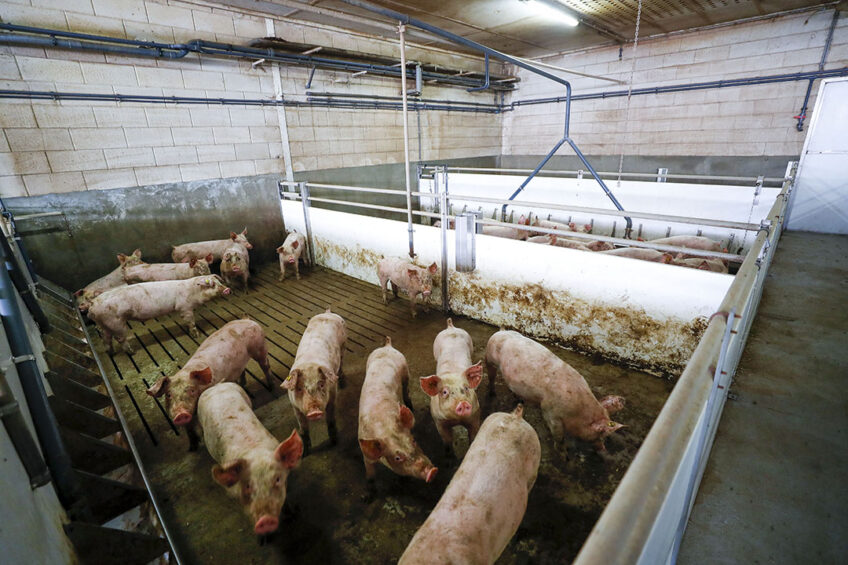
Although the underlying mechanisms of heat stress remain unknown, the swine industry requires commercially viable solutions to reduce early pregnancy disruption of sows weaned and mated in summer.
Heat stress compromises pig production efficiency in breeding herds. It also causes low farrowing rates in sows mated in summer due to high frequency of early pregnancy disruptions. A low farrowing rate is associated with significant annual economic loss in the swine industry. Alteration in estrus-to-ovulation interval, DNA damage in sperm, poor oocyte quality, and suboptimal progesterone and estrogen concentrations contribute to heat stress mediated impacts around conception.
Reduced farrowing rate of sows
The reduced farrowing rate of domestic sows mated in summer mainly manifests in an increased proportion of sows with an irregular return after mating, which needs an enhanced number of mating to establish a viable pregnancy. It is suggested that a high environmental temperature along with the daylight length alteration reduce the average farrowing rate from 5% to 10% compared to the annual average. Research has shown that a reduction in the farrowing rate of sows mated in summer is mainly due to early pregnancy disruption rather than a failure to conceive.
Factors affecting lower farrowing rates during summer
Knowing the precise oestrus-to-ovulation interval is critical to achieve optimum conception after artificial insemination. Studies have shown that heat stress during lactation decreases follicle size and prolongs the estrus-to-ovulation interval.
On the other hand, the estrus-to-ovulation interval is shorter in sows whose litters were weaned in summer. Heat stress condition affects boar fertility by reducing sperm concentrations, and by increasing the percentage of sperm with DNA damage. It also decreases sperm motility, which in turn reduces the conception rate, the embryonic survival rate, and the farrowing rate of sows mated in summer.
Oocyte quality
Oocyte quality, which is the ability of oocytes to form blastocysts, is an important factor determining fertilisation success. Sows weaned in summer show poor oocyte quality. they also show a lower number of pre-ovulatory follicles post-weaning and progesterone concentration in the follicular fluid. In addition, heat stress makes oocytes more susceptible to oxidative stress, impairs oocyte maturation, and reduces fertilisation rate.
It is important to consider the estrogen to progesterone ratio as a potential cause of low farrowing rate during summer
Plasma progesterone concentration
Pregnancy loss before day 35 of gestation due to inappropriate maternal recognition of the pregnancy signal is another major cause of reproductive failure and low farrowing rate in sows mated in summer. Heat stress reduces the average weight of corpus luteum by 15%. However, the plasma progesterone concentration increases more rapidly after estrus detection during summer. Progesterone production modulates the uterine environment and embryo development, and estrogen secretion is required for pregnancy establishment embryonic survival from day 24 of pregnancy onwards in pigs. Thus, it is important to consider the estrogen to progesterone ratio as a potential cause of low farrowing rate during summer.
Strategies to improve farrowing rate
Supplementation of an antioxidant mixture to boars decreases DNA-damaged sperms during summer. Vitamin C or D supplementation above the normal recommended levels improves semen quality. Betaine protects cells from osmotic stress and convert homocysteine to methionine. Betaine supplementation (0.22%) during a hot lactation reduces the negative effects of heat stress in oocyte quality. It also increases follicle development of sows, and enhances subsequent farrowing rate by 6%.
Essential fatty acids such as α-linolenic acid provide energy for oocyte maturation. They also increase oocyte quality, serve as precursors for prostaglandins, and improve the uterine health postpartum, follicle development, and ovulation. An optimum subsequent pregnancy retention rate is then achieved.
Insulin-like growth factor-1 facilitates follicle development and increases the farrowing rate by 5.9% in the sows mated in summer. Injection of 1000 IU human chorionic gonadotropin 12 days after mating induces ovulation of smaller follicles, increases blood estrogen and progesterone concentrations. It also supports endometrium and embryonic growth and improves conception and farrowing rates in primiparous sows mated in summer. In addition, supplementing micronutrients such as vitamin B12 and folic acid just after conception reduces the early pregnancy loss.
Concluding remarks
Alteration in estrus-to-ovulation interval, DNA damage in sperm, poor oocyte quality, suboptimal progesterone and estrogen concentrations contribute to heat stress mediated low farrowing rate in sows. However, the key factors causing early pregnancy disruption remain unknown which make developing targeted intervention strategies more challenging. Further research is required to explain the effects of semen DNA damage on conception rate in pigs, and to investigate the effect of heat stress on abnormal increase in the secretion of prostaglandin by sows during early gestation.



